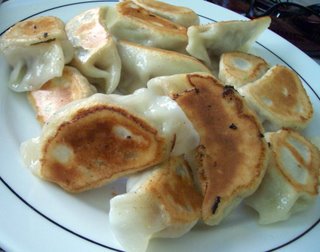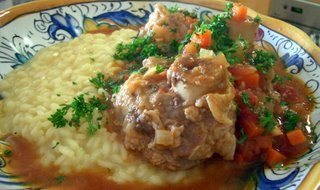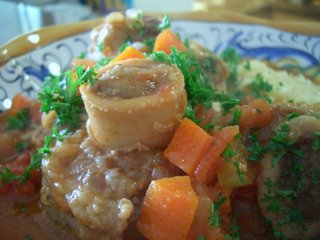Pelmenes
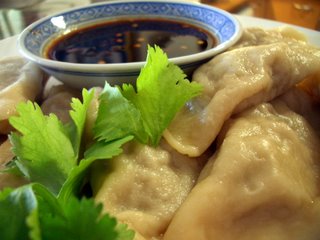 ... or (pilimenes, pelmenis)
... or (pilimenes, pelmenis)Growing up in Australia one is most fortunate to have a vast resource of culinary traditions from which to draw . Not just in the formal sense of restaurants from a staggering variety of different countries’ cuisines, but often from the next door neighbours, your schoolfriends’ mums and dads, or someone who takes a fancy to your aunt and marries her, bringing their family and recipes along for the ride.
One tradition to which I was exposed from a very young age was Russian. Our neighbours, on Sydney’s Northern Beaches where I grew up, were a family who fled Russia after the Bolshevik revolution, settled for a time in Shanghai, then moved as refugees to Australia. Among the amazing recipes my mother learned to create were these little dumplings. I remember days where a posse of eccentric, exotic, vivacious women would huddle ‘round a table kneading, rolling, crimping, folding, and mixing to assemble infinite armies of these treasures, each one taking home their spoils at the end of the day, with farewell kisses on the cheek (three times) way before air kissing was fashionable. So too our family adopted the habit of sitting around on cold afternoons accumulating a militia of pelmenes to be poached and gobbled on a cold night.
I’m not sure how authenticly or strictly Russian this recipe is, but it’s the one we know and I imagine it has just a bit of Shanghai slipped into the Muscovite and Siberian originals. You can buy pelmenes at Cyril’s Deli in Haymarket (Sydney) or Russki’s Deli on Bondi Road, but although they’re very yummy, they’re never quite as full flavoured and spicy and the ones we make. Maybe it’s the work you put in that makes them taste so much better. If you want to make them, co-opt your friends and family to help, and you can catch up on some chat and gossip as you go.
I was prompted to blog this recipe because of an email from Kevin who wanted to re-visit a recipe from his past. Thanks for requesting it, and I hope it’s the source of many nostalgic meals for you!
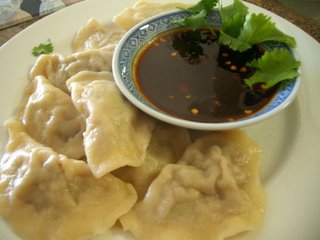
Pelmenes (pronounced “pel-MAY-neez” or “PILL-a-MEN-eez”) are basically dumplings. You can eat them as they are, or with sauces. Or in a broth like soup – although I’ve heard only sissies and Muscovites eat them this way. Most recipes are simple comprising beef (or beef and pork) water, and salt and pepper. Black pepper seems to be one of the most important flavourings in all the recipes I’ve seen. But this is our recipe, from the old country, via Shanghai. It’s truly a labour of love, but oh so worth it!
Dough:
500g plain flour
1 teaspoon of salt
1 whole egg
About 1 cup of warm water
Meat filling:
500 grams of beef (topside or rump, trimmed of fat, hand minced, or put through a food processor if you must. Don’t use commercial mince, you won’t get the right texture and they will be fatty, sticky, and slimy inside. You can also substitute 250g of the beef with 250g of minced lean shoulder pork).
1 cup (about 6 large leaves) of finely shredded Chinese cabbage (wombok)
¾ cup (about 6-7 large) finely chopped spring onions (green onions/ shallots)
6 cloves of garlic, very finely chopped, not crushed
Up to ¼ cup cold water
2 tablespoons soy sauce
2 tablespoons Maggi seasoning
1 teaspoon freshly ground black pepper.
For the filling, mix all the ingredients in a large bowl with your hands – it’s the only way. I’ve used measurements here that should give you the right outcome, but I can only tell when it’s right by the smell and feel. It should be a moist mixture, squishy to the hand as you massage it because of the cabbage and shallots, but not too liquid. It should smell salty and redolent of garlic and pepper, with the slight tang of onions. If it’s too dry add a little more water. It shouldn’t be too sticky – that’s why you use leaner meats to stop any fat emulsifying as you mix it. Transfer to a smaller bowl and cover, set aside in the fridge for 30-60 mins.
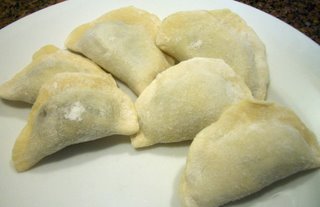
For the dough, make a well in the centre of the flour and add the salt and egg and about half the water. Mix with a knife until the dough just clings together, adding more water as needed (how much liquid you need depends on the day you make it and the flour, as flour absorbs water differentially depending on conditions). Go in with your hands and pull it together so it adheres. It’s better to have a slightly wetter dough at this stage, as you can always knead in more flour – it’s difficult to put water into a too-hard dough. Knead for 10 minutes until it springs back to shape when you push your fingertip into it. Cover and leave in the fridge for 30 minutes.
Now comes the laborious part that you want everyone to share :) There are gadgets made in Russia and elsewhere to cut and fill the pastry, but there’s nothing like hand moulded ones.
Cut a section of dough and roll it into a sausage about the diameter of a 20cent piece. Cut off portions about the size of a full dessertspoon and dust with flour – like you would if you were making gnocchi. Roll each piece into a circle. When you have a pile of dough circles start filling, or pass it on to a compatriot in your production line of helpers. Place a teaspoon of meat mixture in the centre of the dough and fold into a half moon, pinching the edges tightly. Lay these on a floured plate in one layer and place in the freezer until firm. When they are firm, remove them from the plate and place them in a freezer bag and return to the freezer.

When you’re ready to cook them, bring a large pot of beef stock to the boil (you can use water and beef stock cubes for this) and place them into the boiling stock straight from the freezer. Swirl them in the hot liquid to prevent them sticking to the bottom and simmer for 5-10 mins or until the pelmenes float to the surface. Scoop them out with a slotted spoon or ladle and serve. I like mine with a more Asian style sauce of soy and chilli, but you can also have them with soy, vinegar and coriander, or dill and sour cream. Enjoy – and then go and have a nap!






